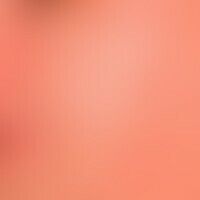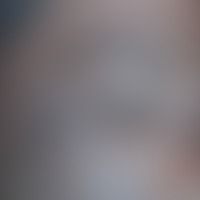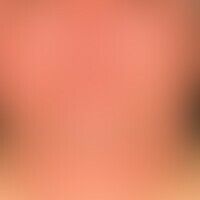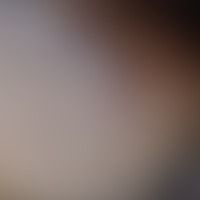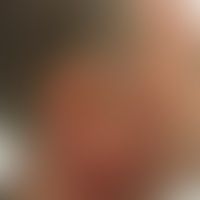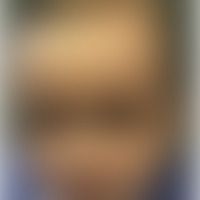
Erythema infectiosum B08.30
Erythema infectiosum: in cases of moderate feeling of illness, flat, butterfly-shaped redness and swelling of the cheeks; furthermore, exanthema of the extremities
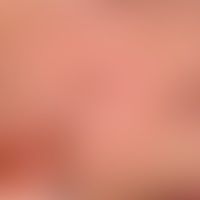
Lentigo solaris L81.4
Lentigo solaris: bizarrely configured, brown-black spot; in the centre dark irregular part (see inlet); here, encircled transition to a lentigo maligna.
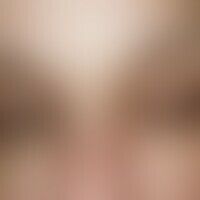
Melasma L81.1
Chloasma. bilateral, chronically stationary, more than 3 months old, blurred, formerly occasionally itching, now symptom-free, brown, smooth spots Occurrence of skin changes after application of photosensitizing eyelid cosmetics during a holiday stay in Southern Europe (Chloasma cosmeticum).
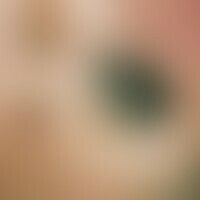
Lentigo maligna D03.-
Lentigo maligna: multiple, chronically stationary, since more than 5 years existing, imperceptibly growing, irregularly limited, black-brownish, 0.3-2.0 cm large pigment spots on the right cheek of a 69-year-old man.
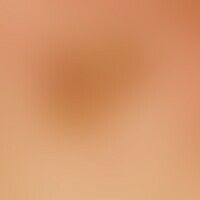
Lentigo solaris L81.4
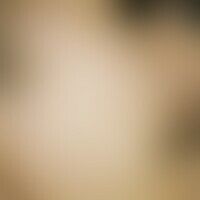
Argyria L81.8
Argyrie: diffuse gray coloration of the facial skin after multiple roll cures due to ulcus ventriculi.
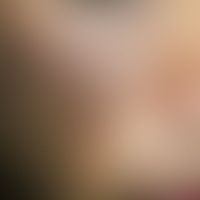
Nevus of Ota D22.30
Naevus fuscocoeruleus ophthalmomaxillaris. irregular, planar, brown to blackish blueish, half-sided pigmentation. half-sided manifestation running along the trigeminal nerve in the cheek area.
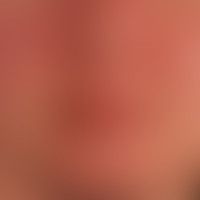
Mixed connective tissue disease M35.10
Mixed connective tissue disease: 43-year-old female patient (with clinical aspect of systemic lupus erythematosus) who fulfils the criteria of MCTD: U1.nRNP : titre : >1:1600; characteristics of systemic lupus erythematosus, Raynaud's phenomenon, swollen hands as well as feeling ill, fatigue, proximal muscle weakness (typical myositis symptoms).

Erythema perstans faciei L53.83
erythema perstans faciei: symmetric, reddening of both cheeks. is not considered a clinical picture by the patient. furthermore signs of a distinct keratosis pilaris on both upper arms.
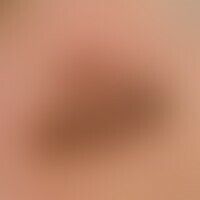
Lentigo maligna D03.-
Lentigo maligna: a slow-growing, heterogeneously pigmented, light to dark brown, asymmetrical spot with irregularly lobed edges on the left cheek of a 68-year-old woman with skin type I, known for several years.
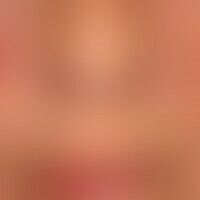
Teleangiectasia macularis eruptiva perstans Q82.2
Teleangiectasia macularis eruptiva perstans, for years slowly progressive "skin redness" from dense telangiectasia.

Nevus araneus I78.1
Naevus araneus with a dense centre and characteristic spiderweb-like tapered and branched capillary ectasia.
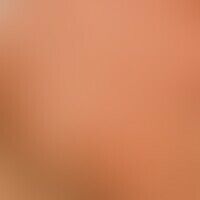
Self-tanning lotion
Self-tanner: uneven browning of the cheek area after application of a self-tanning external layer.
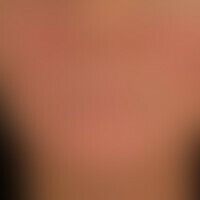
Rosacea erythematosa L71.8
Rosacea erythematosa: Characteristic flat reddening of both parts of the wagon.

Amiodarone hyperpigmentation T78.9
Amiodarone hyperpigmentation: bizarrely configured, flat grey-blue veils reaching far beyond the hairline; on the left side large scar after surgery of a basal cell carcinoma.

Ulerythema ophryogenes L66.4
Ulerythema ophryogenes: the area marked by the square shows follicular papules (keratosis follicularis) on an enlarged scale with a reddened courtyard which merges into a two-dimensional erythema.

Lupus erythematodes chronicus discoides L93.0
Lupus erythematodes chronicus discoides. 5 years of persistent recurrent skin changes in a 25-year-old girl, despite disease-adapted therapy measures. Large flat, soft-red plaque (with still preserved follicles). Conspicuous (re-)pigmentation within a few weeks in the lesional skin (which was hypopigmented before).
